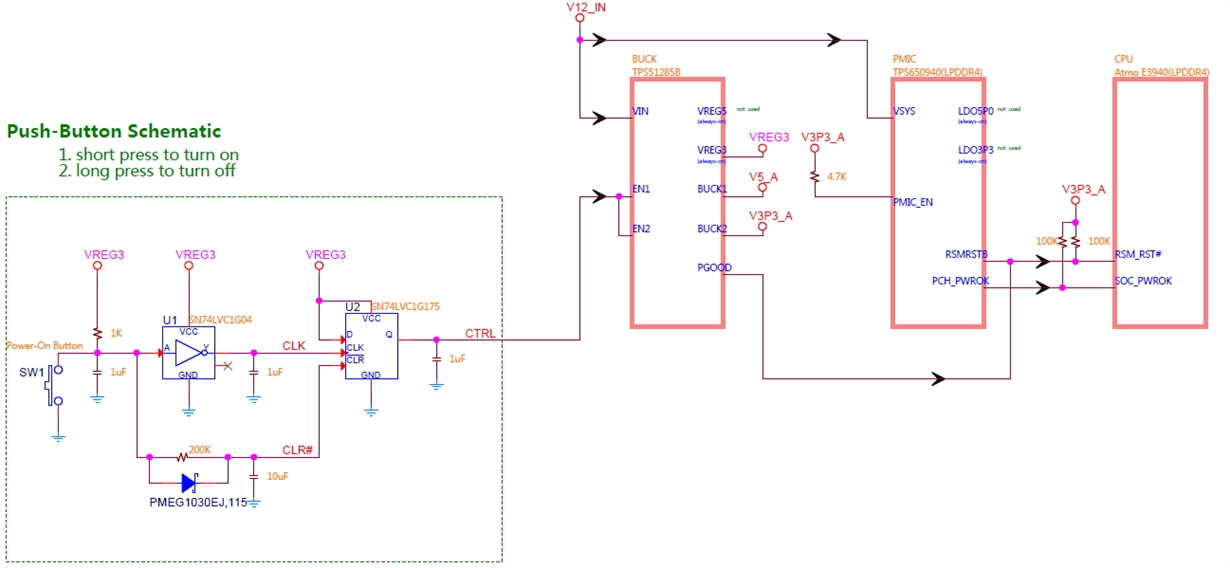Other Parts Discussed in Thread: TPS51285B, SN74LVC1G04, SN74LVC1G14,
Dear Sir,
We are now using TPS650940 as PMIC and TPS51285B as BUCK for Intel APL-I and without EC.
The BUCK have 2 always-on rails, VREG3 and VREG5 and we use VREG3 only.
The PMIC have 2 always-on rails, LDO5P0 and LDO3P3, not used.
The Power of Push-Button circuit is VREG3 and the output of Push-Button circuit is 'CTRL'.
Should we connect 'CTRL' to enable pin of BUCK or enable pin of PMIC?
The attach file is our block circuit.Thanks!



